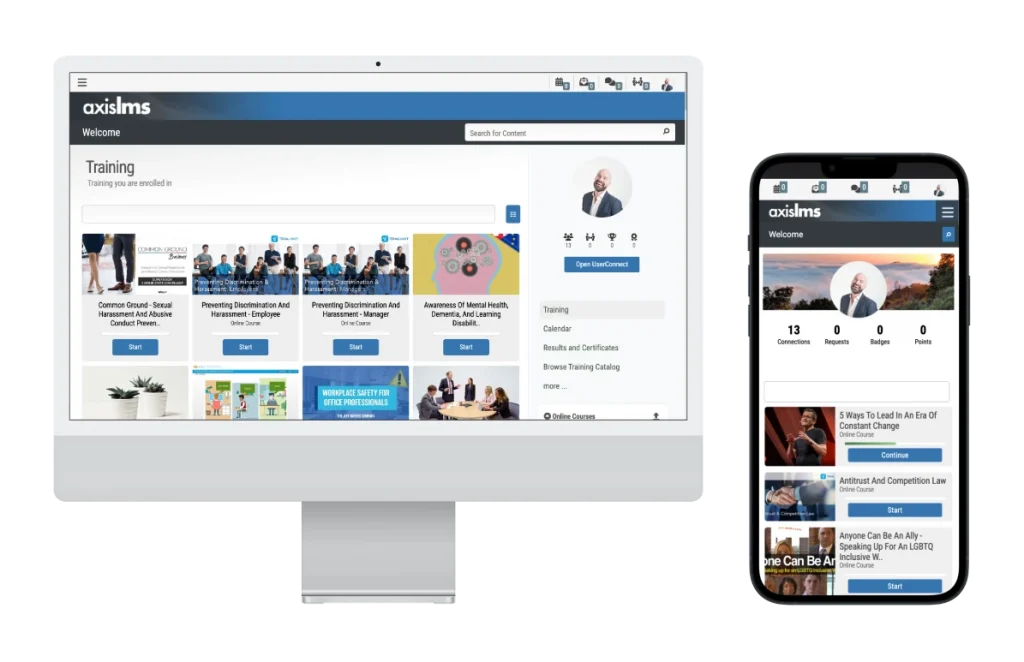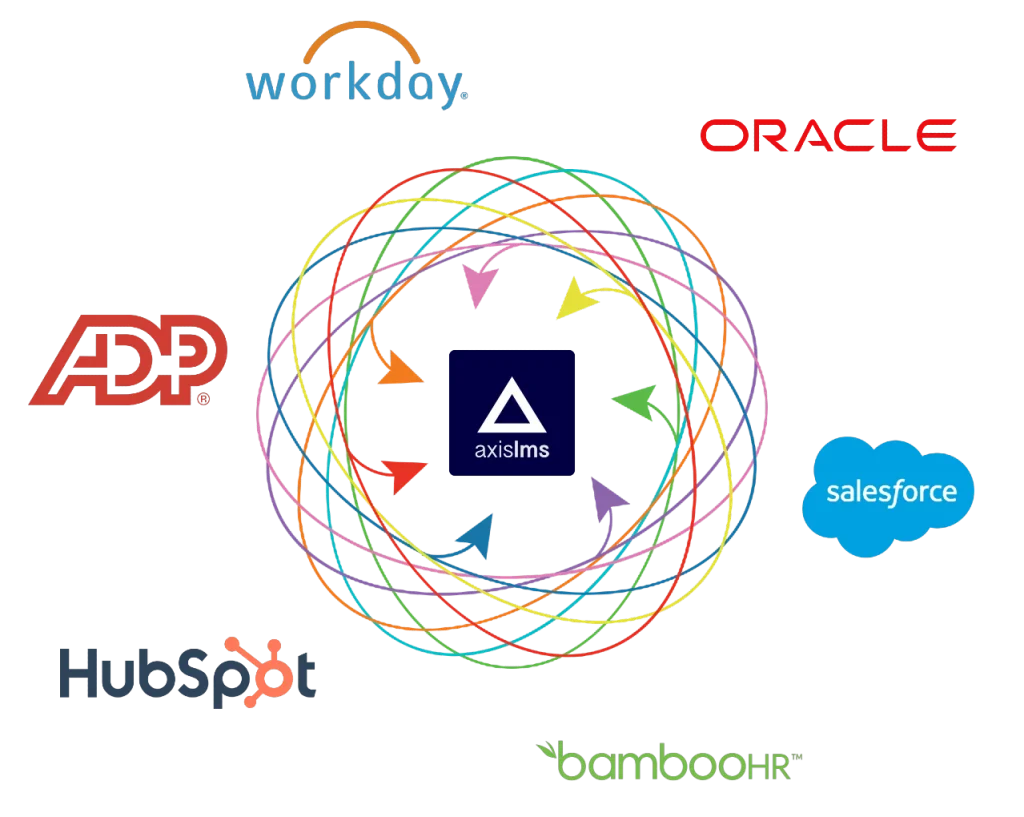In 2025, training agility is no longer optional for small teams … it’s a necessity. As businesses increasingly shift to leaner operations, the pressure on teams to learn quickly and apply knowledge in real time has never been greater. This is where microlearning approaches in LMS platforms stand out. By delivering short, focused training bursts embedded within daily workflows, microlearning reshapes how knowledge is absorbed and applied, especially in small business settings where time, budget, and resources are often limited.

This blog explores why microlearning is becoming the gold standard in employee development and how small teams can benefit from this training approach through a well-structured Learning Management System (LMS).
What Are Microlearning Approaches in LMS?
Microlearning approaches in LMS refer to delivering training content in small, focused units that address one specific learning objective at a time. Unlike traditional long-form training sessions, microlearning typically involves 3- to 7-minute lessons such as videos, quizzes, infographics, podcasts, or short texts, designed for quick consumption.
This method is ideal for today’s fast-paced work environments, especially for small teams with limited time and resources. Learners can access content on demand, whether during a break, between tasks, or on the go using mobile-friendly LMS platforms..
The key elements that define microlearning are:
- Brevity: Training is broken down into compact, time-efficient units.
- Focus: Each micro-lesson targets one learning objective or skill.
- Accessibility: Learners can access content anytime, anywhere … often from mobile devices.
- Engagement: Interactivity and gamification keep learners motivated.
- Performance Support: Content is often available at the point of need, making it ideal for just-in-time learning.
By aligning with how modern employees prefer to learn, microlearning in LMS environments enhances retention, supports productivity, and adapts seamlessly to evolving workplace needs.
Why Small Teams Benefit from Microlearning in 2025
1. Time and Resource Constraints
Small teams often operate with limited manpower and tightly managed schedules. Blocking off multiple hours for training sessions can disrupt workflows and delay core deliverables. Traditional training, such as instructor-led sessions or lengthy e-learning modules, simply doesn’t align with the operational rhythm of small businesses.
Microlearning solves this by delivering concise, focused content that can be consumed in just minutes. A quick 5-minute explainer video before a team huddle, a short interactive quiz between tasks, or a micro-lesson embedded within a project management tool allows learning to happen without halting productivity.
2. Higher Knowledge Retention
Microlearning isn’t just efficient, it’s also scientifically proven to be more effective. Research has shown that breaking information into smaller units significantly improves knowledge retention. In fact, studies indicate that learners retain up to 80% more information when training is delivered in short, targeted segments rather than lengthy modules.

This benefit is particularly valuable for small teams where each member often wears multiple hats and must apply learning quickly on the job. The short, focused format of microlearning allows employees to absorb, retain, and recall information more effectively, which means less need for repeat training.
It also supports spaced repetition, a proven learning strategy that involves revisiting material over time to reinforce memory.
3. Cost-Effective Implementation
Budget constraints are a common challenge for small organizations. Hiring instructional designers, purchasing off-the-shelf training content, or licensing enterprise-grade LMS platforms can be prohibitively expensive. Microlearning offers a more economical alternative.
Modern LMS for small companies now come with microlearning capabilities built-in, often at affordable subscription rates. These platforms enable teams to create and deploy training content using simple drag-and-drop editors, templated formats, and even AI-assisted content generation.No large-scale production or outsourcing is required. The result is a lower barrier to entry for building impactful employee training programs – even with a limited budget.
4. Scalability Without Complexity
As small teams evolve, whether by growing headcount, adopting new technologies, or expanding service lines, their training needs become more complex. Traditional training systems often struggle to keep pace with such changes. Updating a full-length training module can be time-intensive and may require a complete overhaul.
Microlearning, on the other hand, is inherently agile. Individual lessons can be edited, replaced, or added with minimal effort. For instance, if a new tool is introduced to the team, a quick 3-minute video walkthrough can be created and distributed immediately. This modular structure ensures that training content stays relevant and adaptable.
Moreover, as businesses scale, so do their LMS needs. Thankfully, many employee training systems designed for small businesses offer scalable microlearning libraries that can grow alongside the team.
Key Components of Microlearning in Modern LMS
In 2025, modern LMS platforms are designed not only to host content but to enhance learning experiences through smart delivery, adaptability, and interactivity.
Below are the essential components that enable microlearning to thrive in today’s learning ecosystems, especially for small, agile teams.
1. Mobile Optimization
As mobile devices have become the primary tool for communication and productivity, mobile-first learning has become critical to training success. In modern LMS platforms, mobile optimization ensures that microlearning content is fully accessible across smartphones, tablets, and laptops.

This includes responsive interface design that adjusts to screen size, making training materials easy to read and interact with regardless of device. Push notifications play an important role by reminding users to complete lessons or informing them of new content, helping learners stay on track without needing to log in manually.
2. Data-Driven Personalization
Personalization is a cornerstone of effective microlearning, and in 2025, LMS platforms leverage AI and analytics to customize learning experiences like never before. These systems track learner behaviors such as course completion rates, quiz performance, and interaction frequency to build individual learning profiles.
Based on this data, the LMS can automatically assign new lessons, suggest relevant topics, or adjust difficulty levels to match each user’s progress. This tailored approach ensures that learners receive the most relevant and impactful content, reducing time spent on unnecessary materials.
3. Gamification and Social Learning
One of the most powerful ways to enhance engagement in microlearning is through gamification, and modern LMS platforms offer robust features to support this. By incorporating elements like points, badges, achievement levels, and leaderboards, the LMS turns learning into a rewarding experience that feels more like a game than a chore.

These features motivate users by recognizing effort, encouraging competition, and offering a sense of accomplishment. Beyond individual incentives, social learning features add another layer of interaction. Comment sections, discussion threads, and peer-to-peer feedback channels allow learners to engage in meaningful conversations, ask questions, and share insights.
For more information, see also How Learning Management System Gamification Boosts Employee Engagement
How to Implement Microlearning Approaches in LMS
Step 1: Identify Skills Gaps
Start by evaluating the key competencies your team needs to succeed. Use tools like performance reviews, self-assessment surveys, or productivity data to pinpoint where training can help. Focus on specific skills that can be taught in small, outcome-driven lessons such as software usage, communication techniques, or safety protocols.
Step 2: Select the Right LMS
Choose a learning management system built for microlearning delivery. Look for must-have features like multimedia content support, progress tracking dashboards, mobile compatibility, and quick content creation tools. Many LMS platforms designed for small companies include these by default, making them cost-effective and scalable.
Platforms categorized as LMS for small companies often come pre-equipped with these capabilities at an affordable price.
Step 3: Design Bite-Sized Content
Develop microlearning modules that are focused, engaging, and short – typically under 10 minutes. Use a variety of formats like explainer videos, interactive quizzes, audio snippets, and visual guides. Each lesson should focus on one learning objective to ensure retention and avoid cognitive overload.
Step 4: Integrate into Workflow
Make training a seamless part of the workday. Embed modules into commonly used tools such as Slack, Google Workspace, or your project management platform. For new hires, include microlearning in onboarding checklists. When training is accessible at the moment of need, it feels more relevant and less disruptive.
Step 5: Track, Analyze, and Improve
Use built-in LMS analytics to monitor learner behavior such as completion rates, quiz performance, and engagement levels. Regularly review this data to refine your content. Incorporate learner feedback and performance outcomes to improve module effectiveness and ensure the training stays aligned with your business goals.
Future Trends in Microlearning and LMS for Small Teams
AI-Driven Learning Paths
Artificial intelligence and machine learning are transforming how small teams engage with training content. In 2025 and beyond, LMS platforms will use AI to analyze each employee’s behavior, performance data, and learning preferences to deliver hyper-personalized microlearning paths.

This means employees will receive the right content at the right time, without needing a manager to assign every module manually. As job roles shift and grow, AI will also dynamically update the training content, ensuring it remains aligned with evolving business needs.
Voice and AR Integration
Voice-enabled learning assistants and AR technologies are redefining interactivity in microlearning. Small teams in hands-on fields like healthcare, manufacturing, and retail will benefit the most; imagine receiving step-by-step training through smart glasses or voice-guided walkthroughs while actively performing a task.
These immersive experiences make learning more intuitive, especially for procedural knowledge or physical skill-building, and reduce the dependency on traditional, passive learning formats.
Integration with Business Tools
In 2025, microlearning will be embedded deeper into the daily workflow. LMS platforms are becoming more tightly integrated with tools small teams already use, like Slack, Zoom, Trello, and various CRM systems.

This shift allows for just-in-time learning, where employees can access quick lessons or how-to videos directly within their communication or task management platforms. It reduces context-switching, making training less disruptive and more actionable in real-time scenarios.
Nano-Learning and Learning Nudges
Microlearning is getting even smaller, evolving into nano-learning, which delivers lessons in ultra-short formats, typically one to two minutes. These bite-sized units are ideal for refreshing knowledge or learning single concepts quickly. Paired with smart notifications, or “learning nudges,” employees are gently reminded to engage with or revisit content.
Common Challenges and How to Overcome Them
1. Content Overload
One of the most frequent pitfalls in microlearning implementation is content overload. Small teams, eager to provide comprehensive learning options, may unintentionally flood their LMS with too many micro-courses. This can overwhelm learners and dilute the focus of the training initiative.
To avoid this, organizations should prioritize content based on its immediate impact on team performance and business goals. Curate a focused library of high-value topics and regularly audit the content to remove outdated or redundant modules.
2. Lack of Strategy
Microlearning is most effective when it is part of a broader learning strategy. Without defined learning objectives or a clear progression path, team members may engage sporadically and miss out on critical knowledge areas.
Overcome this challenge by mapping micro-courses to specific skills, roles, or business outcomes. Create structured learning paths and communicate the purpose of each module to learners so they understand how it fits into their development journey.
3. Inadequate Metrics
A common issue with microlearning adoption is the lack of performance tracking. Without proper analytics, it becomes difficult to assess whether the training is working or needs improvement. Many small businesses neglect this aspect due to limited resources or lack of awareness.
To resolve this, select an LMS that includes robust analytics and reporting features such as completion rates, quiz performance, and time spent on content. Use this data to iterate and improve learning effectiveness continuously.
Final Thoughts
In a fast-paced business environment, microlearning approaches in LMS offer the ideal balance of efficiency, flexibility, and impact especially for small teams. These approaches empower organizations to scale knowledge without scaling costs, retain employees by offering continuous learning, and adapt quickly to industry shifts.Whether you’re implementing your first employee training system or upgrading to a training platform for customer education, integrating microlearning is one of the smartest moves small businesses can make in 2025.